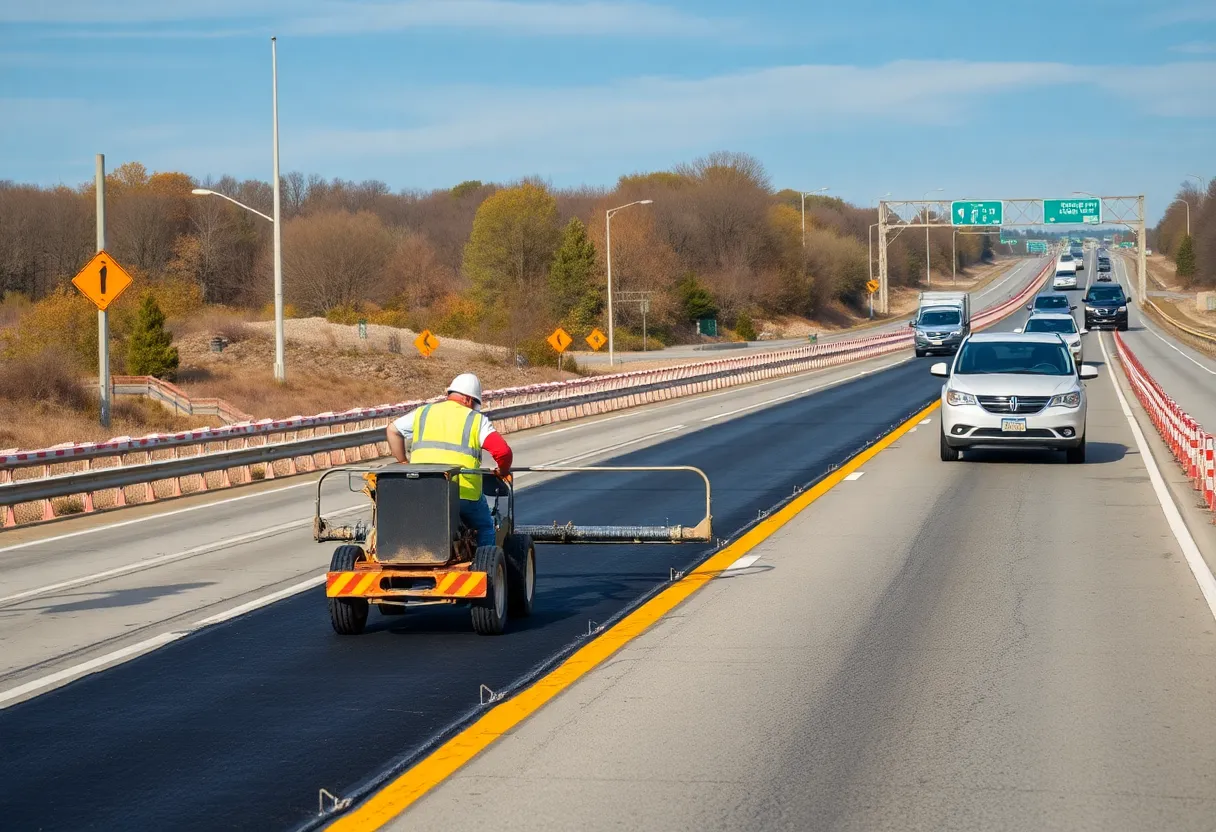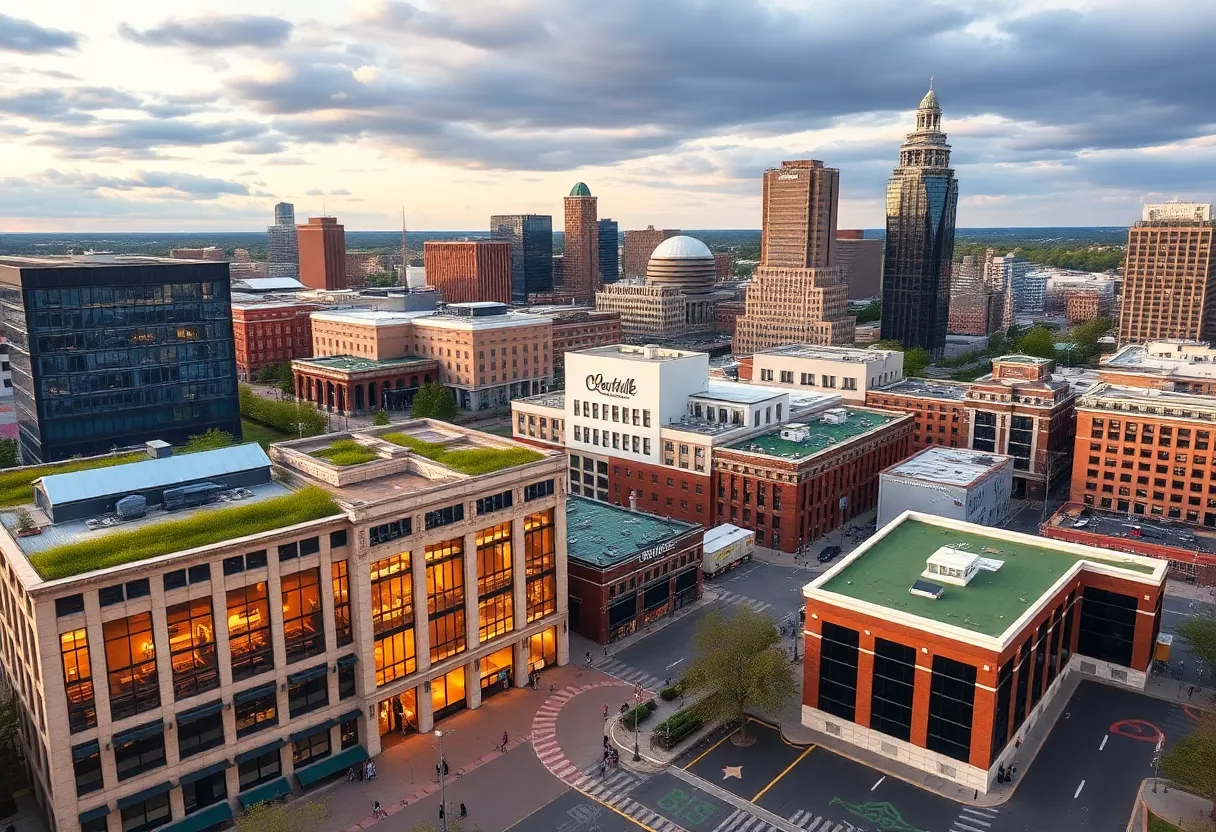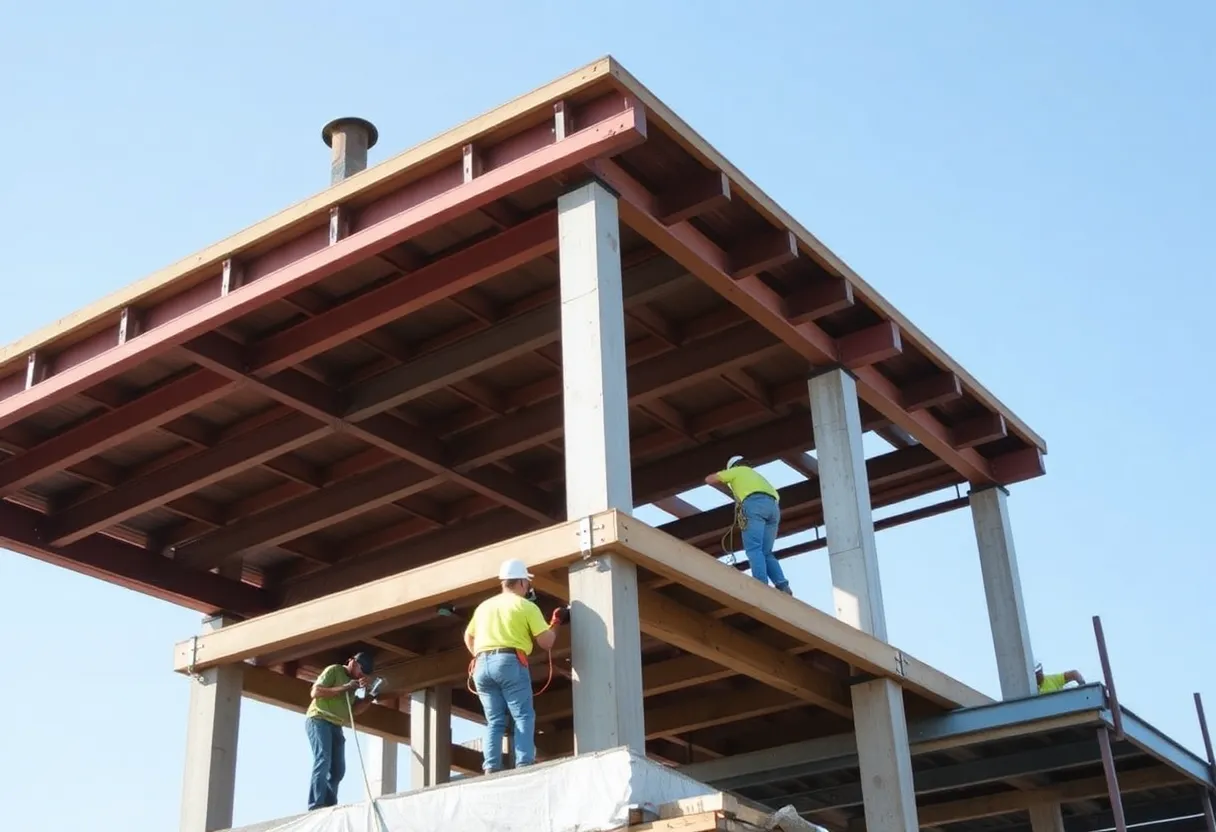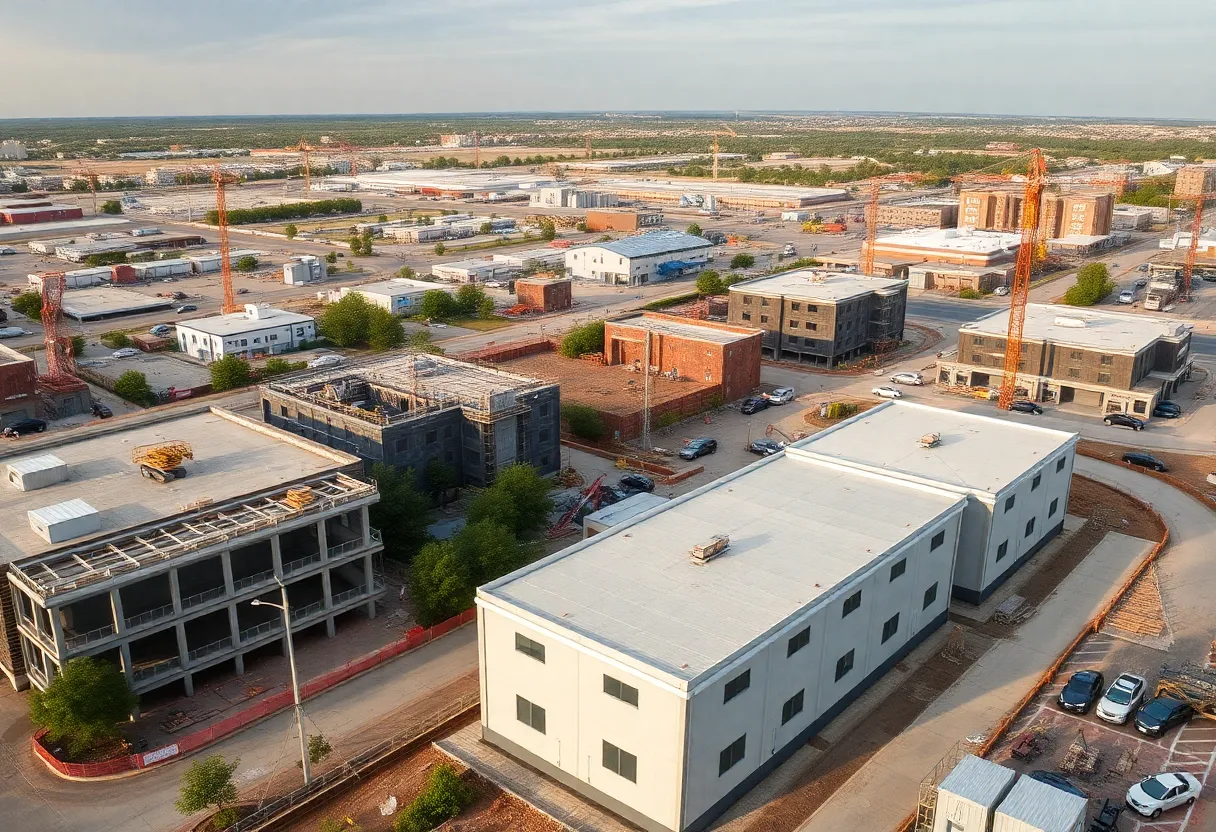News Summary
The U.S. construction industry is currently balancing environmental concerns with economic growth. Criticism surrounds the $4.5 billion smart wall initiative due to its potential ecological impacts. Meanwhile, clean energy projects, such as nuclear reactor developments, are gaining momentum to promote sustainability. Homebuilder stocks are expected to rise as interest rates ease, and modular construction is modernizing practices to minimize waste. Additionally, advancements in transportation infrastructure are being observed, despite some regional setbacks. These developments reveal a complex interplay between ecological and economic factors within the sector.
Nationwide
U.S. Construction Sector Faces Environmental Challenges and Growth Opportunities
In the U.S. construction industry, recent developments highlight a tension between environmental concerns and economic advancements. The $4.5 billion smart wall initiative along the Southwest border has drawn criticism for its potential ecological impacts, including disruptions to wildlife from sensor installations, leading to legal challenges. This issue underscores broader efforts to balance security needs with sustainability.
Amid these challenges, the sector is seeing positive momentum in clean energy projects. Nuclear reactor developments are progressing with frameworks that share risks among stakeholders, aiming to provide reliable energy while creating jobs nationwide. These initiatives represent a shift toward sustainable infrastructure, contrasting with the border wall controversies.
Economically, homebuilder stocks are projected to experience a surge in 2026 as interest rates ease, potentially boosting housing markets across the country. Meanwhile, modular construction is expanding through efforts by companies like Comfort Systems USA, which are modernizing building practices to reduce waste and improve efficiency. These innovations are helping to streamline operations and minimize environmental footprints in various projects.
Transportation infrastructure also shows mixed progress. The opening of Idaho’s U.S. Highway 95 improves mobility for drivers in that state, enhancing connectivity and safety. In contrast, lane closures in Michigan are creating temporary disruptions, highlighting ongoing maintenance needs in different regions. These developments illustrate the sector’s role in supporting daily life and economic activity nationwide.
Technology is playing a growing role in construction debates. The use of artificial intelligence is sparking discussions about its effects on labor costs versus productivity gains, potentially transforming how projects are planned and executed. Additionally, regional focuses include yacht construction in California, which emphasizes advanced manufacturing techniques, and water infrastructure projects in Tennessee, aimed at improving service reliability and capacity for communities.
These stories collectively depict a U.S. construction sector navigating sustainability, security, and economic growth. The border wall project, in particular, exemplifies how environmental and social issues can intersect with large-scale infrastructure, prompting stakeholders to address potential wildlife disruptions through legal and regulatory measures.
Supporting details reveal the scale of these initiatives. The smart wall, valued at $4.5 billion, involves advanced sensors that could affect ecosystems, leading to ongoing legal actions to mitigate impacts. On the energy front, nuclear projects under shared-risk models are expected to generate employment opportunities while advancing clean energy goals. For housing, the anticipated stock surge in 2026 ties to easing rates, which could stimulate demand and investment.
In modular construction, expansions by Comfort Systems USA are reducing waste through prefabricated components, offering a more efficient alternative to traditional methods. The Idaho U.S. Highway 95 opening counters challenges like Michigan’s lane closures by providing smoother traffic flow, demonstrating regional variations in infrastructure priorities. AI’s integration is debated for its potential to lower costs but raise questions about workforce implications, while California’s yacht sector and Tennessee’s water projects highlight specialized regional efforts.
Background context shows the U.S. construction industry adapting to multiple pressures. Environmental criticisms of the border wall stem from its potential to disrupt wildlife habitats, a concern amplified by similar past projects. Nuclear developments build on global trends toward renewable sources, with shared-risk frameworks encouraging collaboration. As rates ease, homebuilder stocks reflect broader economic forecasts for 2026, signaling recovery from recent downturns. Innovations in modular construction address waste reduction, aligning with national sustainability goals. Transportation updates, such as the Idaho highway, improve mobility amid varying state-level challenges. AI debates echo industry-wide discussions on automation, and regional projects like those in California and Tennessee underscore diverse applications in the sector.
Overall, these developments illustrate how the U.S. construction sector is grappling with interconnected issues, from ecological impacts to technological advancements, shaping the future of infrastructure nationwide.
Key Insights from Recent Trends
To summarize the main elements:
- Environmental impacts: The $4.5 billion smart wall initiative faces criticism for disrupting wildlife, leading to legal challenges.
- Clean energy progress: Nuclear reactor developments create jobs under shared-risk frameworks for sustainable energy.
- Economic forecasts: Homebuilder stocks may surge in 2026 with easing rates.
- Innovations: Modular construction expansions by Comfort Systems USA reduce waste and modernize practices.
- Infrastructure updates: Idaho’s U.S. Highway 95 opening improves mobility, while Michigan’s lane closures highlight challenges.
- Technology debates: AI’s role in construction sparks discussions on labor costs versus productivity.
- Regional focuses: Yacht construction in California and water infrastructure in Tennessee exemplify targeted efforts.
This article is based on recent reports from various sources, compiled as of October 12, 2025.
FAQ
What are the main environmental concerns with the U.S. border wall projects?
The $4.5 billion smart wall initiative involves sensors that could disrupt wildlife, prompting legal challenges in the U.S. construction sector.
How are nuclear reactor developments impacting the U.S. economy?
Nuclear reactor developments aim for clean energy, creating jobs under shared-risk frameworks in the U.S. sector.
What factors might lead to a surge in homebuilder stocks in 2026?
Homebuilder stocks may surge in 2026 with easing rates in the U.S. construction industry.
How is modular construction changing industry practices?
Modular construction expansions by Comfort Systems USA modernize practices, reducing waste in the U.S. sector.
What improvements does the opening of Idaho’s U.S. Highway 95 bring?
Idaho’s U.S. Highway 95 opening improves mobility, countering issues like Michigan’s lane closures in U.S. infrastructure.
What debates surround AI in the construction industry?
AI’s role in construction sparks debates over labor costs versus productivity in the U.S. sector.
What regional projects are highlighted in recent U.S. construction news?
Yacht construction in California and water infrastructure in Tennessee exemplify regional focuses in the U.S. sector grappling with sustainability, security, and economic growth.
Chart: Key Features of U.S. Construction Developments
| Feature | Description | Impact |
|---|---|---|
| Border Wall Initiative | $4.5 billion smart wall with sensors | Ecological disruptions and legal
Deeper Dive: News & Info About This TopicConstruction FL ResourcesRenewed Investor Interest in U.S. Construction Sector Signals Potential Rebound Author: Construction FL NewsThe FLORIDA STAFF WRITER represents the experienced team at constructionflnews.com, your go-to source for actionable local news and information in Florida and beyond. Specializing in "news you can use," we cover essential topics like product reviews for personal and business needs, local business directories, politics, real estate trends, neighborhood insights, and state news affecting the area—with deep expertise drawn from years of dedicated reporting and strong community input, including local press releases and business updates. We deliver top reporting on high-value events such as the Florida Build Expo, major infrastructure projects, and advancements in construction technology showcases. Our coverage extends to key organizations like the Associated Builders and Contractors of Florida and the Florida Home Builders Association, plus leading businesses in construction and legal services that power the local economy such as CMiC Global and Shutts & Bowen LLP. As part of the broader network, including constructioncanews.com, constructionnynews.com, and constructiontxnews.com, we provide comprehensive, credible insights into the dynamic construction landscape across multiple states. Construction FL News
The FLORIDA STAFF WRITER represents the experienced team at constructionflnews.com, your go-to source for actionable local news and information in Florida and beyond. Specializing in "news you can use," we cover essential topics like product reviews for personal and business needs, local business directories, politics, real estate trends, neighborhood insights, and state news affecting the area—with deep expertise drawn from years of dedicated reporting and strong community input, including local press releases and business updates.
We deliver top reporting on high-value events such as the Florida Build Expo, major infrastructure projects, and advancements in construction technology showcases.
Our coverage extends to key organizations like the Associated Builders and Contractors of Florida and the Florida Home Builders Association, plus leading businesses in construction and legal services that power the local economy such as CMiC Global and Shutts & Bowen LLP.
As part of the broader network, including constructioncanews.com, constructionnynews.com, and constructiontxnews.com, we provide comprehensive, credible insights into the dynamic construction landscape across multiple states.
Stay ConnectedMore Updates Major Highway Closures Begin for Winter Maintenance in MichiganNews Summary Michigan has begun road closures on 13 highways as part of a winter maintenance initiative. With a $400 million investment, the focus is
October 27, 2025
 Music Row Extension Project Nears Completion in NashvilleNews Summary The Music Row Extension project in Nashville is approaching its final stages, promising to enhance the local entertainment industry with new studio spaces
October 27, 2025
 Kentucky Legislature Considers Bill for American-Made MetalsNews Summary The Kentucky legislature is debating a bill that would require the use of American-sourced metals in state construction projects from November 2025. Supporters
October 27, 2025
Would You Like To Add Your Business? |


